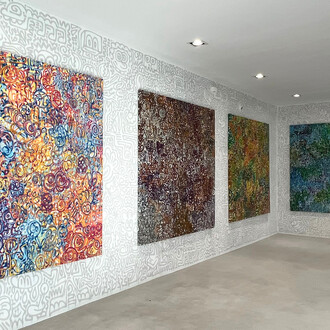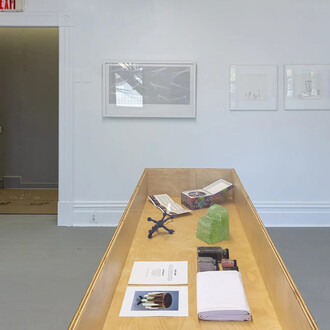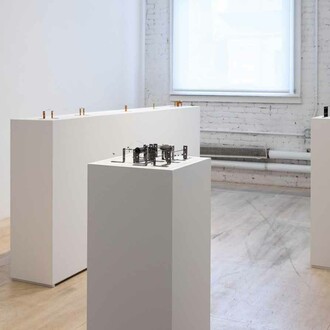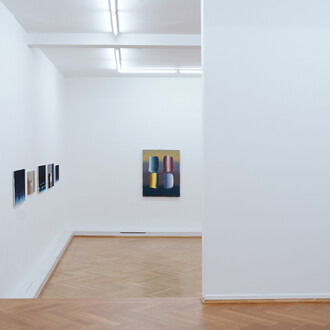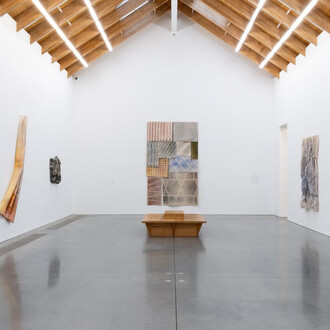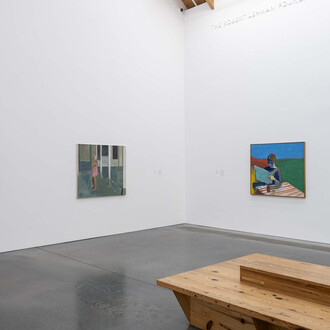Opening on Friday 11 April 2014, at 5 pm, at MAC Maja Arte Contemporanea in Rome, of the exhibition “The Elf-King”, presenting a selection of twenty painting by the artist Margareth Dorigatti inspired by the ballad Erlkönig (“The Elf-King”), written by Johann Wolfgang von Goethe in 1782 as part of a Singspiel, Die Fischerin (“The Fisherwoman”).
In the exhibition catalogue Eva Clausen writes: The ballad is one of the most famous po-ems in the German-speaking world. [...] From the point of view of form and content, it appears to be clear and easy to follow, yet when it comes to interpretation, it is much more complex, suggesting a wide range of possible readings. Margareth Dorigatti’s interpretation is a revelation, fluctuating be-tween tension, disintegration and the shaping of form.
Art is not a refuge. Art is a struggle. With oneself. With materials and matter. With truth. Whoever approaches Margareth Dorigatti’s paintings should be warned: you look at your own risk. These paintings provide no mediation, no safe distance. They are works that conjure up without narrating, they don’t describe reality but take its place, becoming another reality that is both imaginary and experienced at a profound level. [...] These overlapping images embody a process that suggests rit-ual and initiation. Starting out from dissolution, from the abandonment of the self, from absorption into another world, initiation begins, undergoing various stages of purification before knowledge can be achieved. Such is the process of the dissolution of form, and its successive new embodiment. Such is the experience of taking – and making - shape.
Dorigatti’s works are ineluctable. They bewitch whoever observes them. They are like rocks hewn by time, yet unchanging, massive, intensely powerful, and at the same time coldly ethereal and un-fathomable. Conjunctions that separate us from the abyss. The enticement is irresistible, and the at-traction fatal. This is the voice of the Elf-King. The precipice. An invitation to probe the depths of the subconscious, in apparent free-fall. The artist is aware of the risk, because she perceives release, not only her own. In this fall there is deliverance, in the shape of knowledge.
[...] The Ballad is a paradigmatic example of the expressive power of what is left unsaid. Yet the unspeakable is clearly there, in all its immeasurable extension. Such is Dorigatti’s painting, at the same time both abstract and figurative, material and spiritual, aerial and full of gravity. Deeply lived and developed with scientific, alchemical rigour.
Margareth Dorigatti. Born in Bolzano in 1954. In 1973 she studied at the Accademia di Belle Arti di Venezia with Emilio Vedova. In 1975 she moved to Berlin where she studied Painting, Graphics and Photography at the Hochschule der KLnste. In 1977 she founded a Studio home frequented by eminent artists and theatre people living in Berlin. In 1979 she was awarded a grant to study in New York, with the task of photographing the Actor's Studio and Lee Strassberg’s lessons. She starting exhibiting her work in private galleries in Berlin in 1980, and 1983, together with Joachim Szymzcak, undertook a huge project for the decoration of the Berlin underground network: 75 paintings in 8 different stations. She won the Internationalen Bauausstellung competition for the decoration of the façade of a historic Kreuzberg house. In 1984 she moved to Rome, where she has continued her work as a painter.
She has exhibited in Italy and abroad in private galleries, public venues and museums (Rome, Paris, Milan, Pescara, Bolzano, Modena, Bologna, Berlin, Nimes, Lyon, Cologne, Bonn, etc).
She takes part in collective exhibitions in Italy and abroad.
She is Professor of Decoration at the Accademia di Belle Arti in Rome.
“Dorigatti is an artist of elective affinities. She is more inclined to look for correspondence in the fields of literature and music than in the visual arts, where she has distanced her-self from Postmodernism, returning to a sort of classicism in the ethical, structural sense, to questions of form and substance. Her subject matter has thus tended to be the world of myths, gods, saints and demons.” [Eva Clausen]
Curated by Daina Maja Titonel.
MAC Maja Arte Contemporanea
Via di Monserrato, 30
Roma 00186 Italia
Tel. +39 06 68804621
info@majartecontemporanea.com
www.majartecontemporanea.com
Opening hours
Tuesday - Friday 3.00pm - 8.00pm
Saturday 11.00am - 1.00pm and 3.00pm - 7.30pm
Monday and holidays closed
Or by appointment








